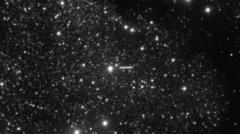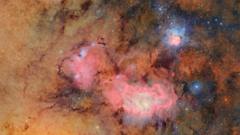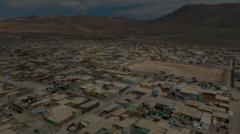A recent revelation from astronomers has unveiled an astonishing discovery that could hold secrets about the origins of our solar system. Named 3I/ATLAS, this interstellar object was spotted last week and could be the oldest comet humans have ever encountered, according to a research team from Oxford University. Preliminary findings suggest that it may be up to three billion years older than our solar system, potentially surpassing seven billion years in age.
3I/ATLAS was initially identified on July 1, 2025, by the ATLAS survey telescope in Chile, while it was approximately 670 million kilometers away from the Sun. As scientific teams worldwide race to analyze its characteristics and path, excitement grows within the astrophysics community. "We are all very excited by 3I/ATLAS," remarked Matthew Hopkins, an astronomer from Oxford who recently completed his PhD. His model indicates that the comet likely originated from the Milky Way’s 'thick disk,' home to ancient stars.
The unique composition of 3I/ATLAS raises intriguing questions about its origins; the team hypothesizes it could contain significant amounts of water ice, creating a spectacular display of vapors and dust as it approaches the Sun later this year. This process may give rise to a luminous tail, capturing the attention of avid stargazers.
Co-author Professor Chris Lintott noted, "This is an object from a part of the galaxy we've never seen up close before," emphasizing the extraordinary nature of this discovery. The research team estimates a two-thirds probability that 3I/ATLAS is older than the solar system itself and has been floating through interstellar space for eons.
The comet is set to become visible to amateur astronomers later this year, creating an opportune moment for skywatchers to observe this celestial marvel. Prior to 3I/ATLAS, only two other interstellar objects had been identified: 1I/'Oumuamua in 2017 and 2I/Borisov in 2019. Looking ahead, astronomers are preparing for the full operation of the Vera C Rubin telescope in Chile, which is expected to facilitate the discovery of numerous new interstellar objects as it begins surveying the southern night sky.

















